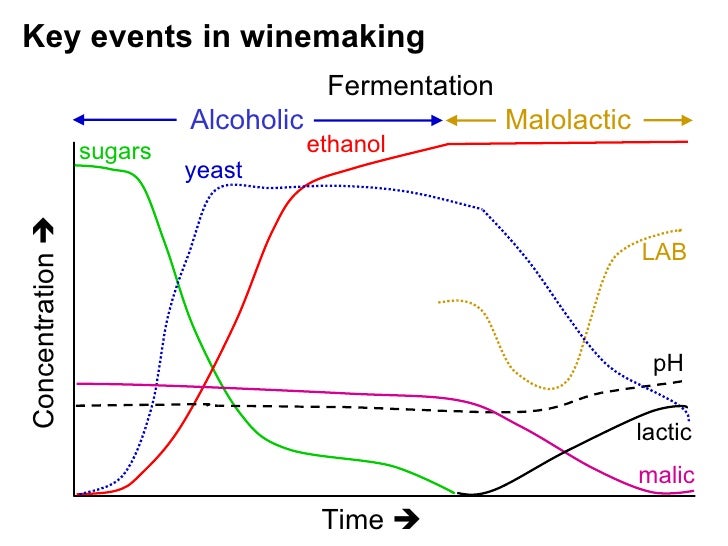
At the time people knew that leaving fruits and grains in covered containers for a long time produced wine and beer but no one fully understood why the recipe worked. It may begin to ferment in as little as 12 hours.

This is a complex chemical reaction whereby the yeast interacts with the sugars glucose and fructose in the must to create ethanol and carbon dioxide.
Fermentation time for wine. The risk of stuck fermentation and the development of several wine faults can also occur during this stage which can last anywhere from 5 to 14 days for primary fermentation and potentially another 5 to 10 days for a secondary fermentation. When is fermentation finished. By shea comfort.
In about two weeks most of the sugar will have been consumed by the yeast and fermentation will slow making it easier to keep track of the falling sugar level of your wine. You want to be aware of your sugar levels because they will give you an overview of how the ferment has been progressing. This is the most vital part of the production of wine.
After squashing fermentation takes place. Fermentation begins naturally within 6 12 hours when aided with yeast in the air. 4 the fermentation continues until all the sugar is completely converted into alcohol and dry wine is produced.
To create sweet wine the process is stopped before all the sugar is converted completely. Add wine yeast and give it a good stir. It may begin to ferment in as little as 12 hours.
Red wines need to be stirred or punched down at least twice per day when fermentation is going strong. The fermentation temperature of your wine can have a tremendous effect on the flavor and aroma profile. Immediately after harvesting white grapes they are usually crushed destemmed and pressed into juice to later be fermented into wine.
Now is a good time to hit the wine with 1 4 tsp of potassium metabisulfite per 6 gallons of wine to. Producing a wine of balance is in part a process of adjusting the length of fermentation. Of course there are other contributing factors related to fermentation that contribute to the character of the wine including time on the skins prior to fermentation fermentation temperature how frequently you mix the skins into the fermenting juice.
Depending on the temperature at which must is fermented the process can take one to two weeks. Following fermentation the winemaker will store the wine in various vessels such as barrels or stainless steel tanks for example for a period of time designated by local wine laws and based on the style of wine being made. Wine ferments so slowly that you may not notice a difference over just three days.
There s no rush to get a wine into the bottle since you re usually looking at an aging period of around 6 months. So why risk it. The fermentation process turns grape juice must into wine.
This is a complex chemical reaction whereby the yeast interacts with the sugars glucose and fructose in the must to create ethanol and carbon dioxide. The co2 is released from the wine vessel through a fermentation lock. The chemistry of fermentation.
At the time people knew that leaving fruits and grains in covered containers for a long time produced wine and beer but no one fully understood why the recipe worked.